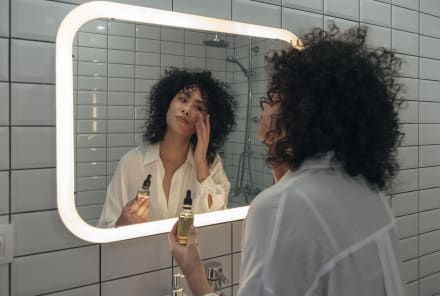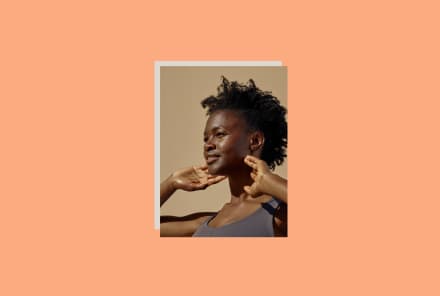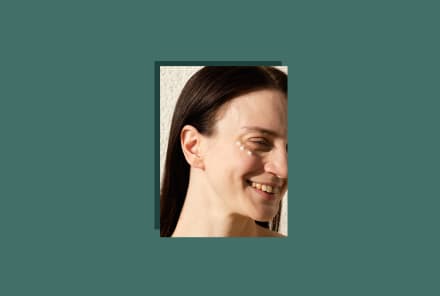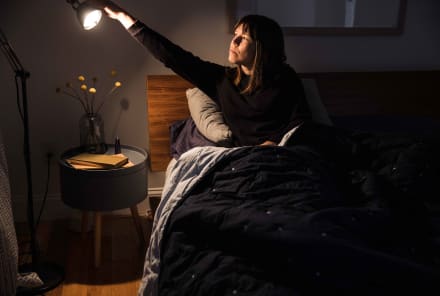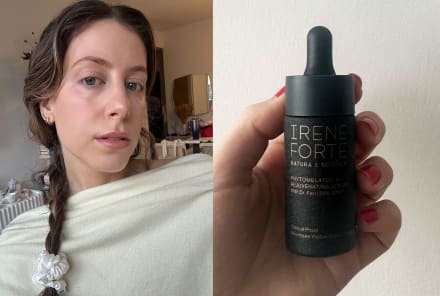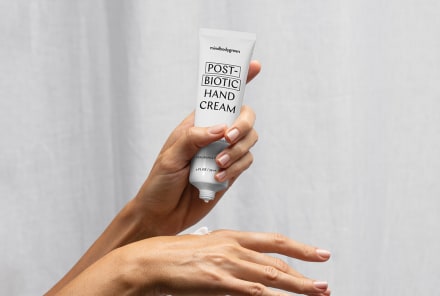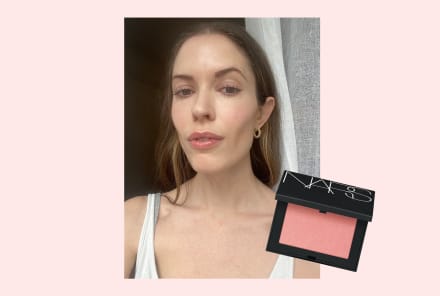Advertisement
How To Use Facial Mapping & Reflexology To Feel Balanced & Energized


One of the most fascinating aspects of the human body is how it can work so hard on our behalf to create balance within with just a little conscious support. As the environment continues to become an increasing inflammatory threat with pollution, plastic-contaminated water, increased UV rays, and tech addiction, it’s especially important to learn how to counteract it to maintain an inner sense of well-being.
As a holistic esthetician and therapeutic skin coach, I do this work with my clients in session and aim to equip them with tools and techniques they can use on the daily to de-stress and support their skin1. Multireflexology, otherwise known as Dien Chan Zone or "the original" facial reflexology, is a perfect example of one such technique. I use a version of this in session when giving facials to clients, but they can use the techniques on themselves at home. This kind of reflexology essentially uses the face to "map" all over the body to communicate to the different systems all over the body. It can promote different functions like support for the lymph, release in tension, and balance yin and yang energies. In order to understand how it works, it’s essential to take a look at the history.
Facial reflexology: a brief history.
Multireflexology Dien Chan practice was founded in Saigon, Vietnam, by Professor Bùi Quốc Châu back in 1980. He discovered a new set of mapping patterns on our faces to help connect to the different systems of the body from questioning the root of acupuncture meridians and points. He did this by working on countless patients at the Center for Substance Abuse Treatment, where he used to experiment with reflexology occidental works like iridology (iris-reading), endonasal reflexology (activation of pressure points near and around the nose), and auriculotherapy (ear acupuncture). Over several years, he developed a new therapeutic method for use on the face aimed to help improve health and balance holistically.
Instead of continuing to use acupuncture needles to incite the chi flow of healing needed to balance the energies in a person’s body, facial reflexology tools were born. There are so many techniques on the market now (hello, gua sha and jade rolling), but reflexology tools have their own story and character. Many of the tools are crafted to hold both the yin and yang energy in order to help you find balance in each ecosystem of the face. By determining the right points to work on within the system, the tools can allow the individual to become his or her own healer.
Why facial reflexology works.
This permission to self-heal can help us better connect to our bodies. Sometimes it’s as simple as tuning in to what feels like too much (excess yang) and not enough (excess yin), at a certain point in your body or face, depending on where and how you’re using the tools.
In my experience, the sensation of using the tools can be described as slightly painful but should always be tolerable. Once you reach your focal point within your reflex zone of need, you can often feel a tension and a releasing sensation. In the end, it should feel good.
Interestingly enough, facial mapping through facial reflexology, which is based loosely on traditional Chinese medicine doctrine, indicates works under the idea that similar physical shapes in the body hold similar energetics. For example, when you use a tool for the nose, you can be connected to the spine since they are both long and straight, therefore considered to be connected and similarly oriented. If you are looking to alleviate sharp pains you can roll the yin side of your tool to help balance the yang energy. If the sensation is considered to be more of a dull ache, you can roll the yang side of the tool to help balance the excess yin energy. Some back pain can also be related to kidneys through excess dehydration, which affects your chi life force. Focusing on the kidney points along the sides of the nostrils can help balance this sensation, along with drinking extra water to support the kidneys. You will notice a feeling of relief on the tenderness of the nose, and you may also experience relief of the pains overall.
It’s all communication—there is no shame in experiencing an imbalance as long as you view it as the body giving you directions to finding your most balanced self.
Characteristics of yin and yang energy.
In addition to operating along different meridians and with organ energies, traditionally, facial mapping in reflexology is also connected to yin and yang energy. Yin energy is often described as cold, wet, smoothing, filling, dispersed, soft, achy, dull, deep, heavy, or even stagnant. An excess of yin energy can be as simple as excessively oily skin or even cysts. Yang energy can be described as hot, dry, boosting, moving, reducing, shrinking, precise, tight, or even red. Facial cues that indicate an excess of yang energy include red and/or inflamed skin. In order to balance an excess or deficiency of either energy, you must balance it out with its opposite.
While it’s always beneficial to meet with a professional—there are 257 points within the Dien Chan zones alone—the tools are an easy way to simply treat a yin or yang imbalance at home. I encourage my clients to simply test which side of a tool feels best or creates a sensation you are intuitively drawn to. Without even knowing which is yang and which is yin, you can start experiencing the positive effects of facial reflexology. One of the most popular tools is the 206 multireflex tool because of its easy-to-use roller sides for both yin and yang energies.
Here’s how to do a DIY facial reflexology routine on yourself.
This routine specifically is to balance yin and yang energy in the face and therefore throughout the body.
- Start on a dry clean face in order to allow the tool to work to its best ability. A freshly washed face with a mist of a soothing hydrosol is ideal to prep your skin for facial reflexology success.
- You can take an inventory of your whole body to see how you’re feeling. Are you sluggish? Are you swollen? Are you tired? Are you stimulated? All of these questions from your body inventory can help you start to tune in to what may be presenting itself on the skin as a signal of what to work on through the face.
- Test with your tool to determine what feels best to you. It’s very normal to feel a little bit of both depending on what you are experiencing that day. Perhaps you may need a little more yin rolling on some places than others. Either way, the tool can help you determine how to find your balance again. I like to start with the forehead going in a horizontal direction to test both the yin and yang sides of my reflex tool of choice.
- Once you’ve determined the side that feels best to your skin, you can follow the curvature of the skin to roll your side of choice horizontally and then match it vertically in a cross-hatch fashion. Take your time with this and allow yourself to gently use the tool without too much pressure by rolling softly and slowly. You can move down the neck as well if desired.
- If you feel called to balance your energy by rolling the tool’s other end on different sections of the skin, this is a great time to do it. Follow your instincts that are validated by sensations of relief and comfort.
- Lastly, mist your skin again and add your serum of choice as your skin cells are activated and ready to take on the nutrients of your skin care. You’ll be glowing and feeling much more balanced after just this quick and simple step in your daily care!
If you want to try a facial technique that requires only your hands, check out this lymphatic drainage massage.
Watch Next
Enjoy some of our favorite clips from classes
Enjoy some of our favorite clips from classes
What Is Meditation?
Mindfulness/Spirituality | Light Watkins
Box Breathing
Mindfulness/Spirituality | Gwen Dittmar
What Breathwork Can Address
Mindfulness/Spirituality | Gwen Dittmar
The 8 Limbs of Yoga - What is Asana?
Yoga | Caley Alyssa
Two Standing Postures to Open Up Tight Hips
Yoga | Caley Alyssa
How Plants Can Optimize Athletic Performance
Nutrition | Rich Roll
What to Eat Before a Workout
Nutrition | Rich Roll
How Ayurveda Helps Us Navigate Modern Life
Nutrition | Sahara Rose
Messages About Love & Relationships
Love & Relationships | Esther Perel
Love Languages
Love & Relationships | Esther Perel
